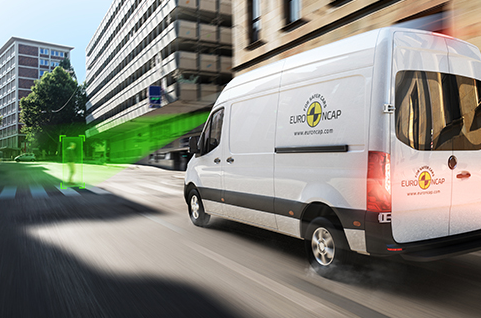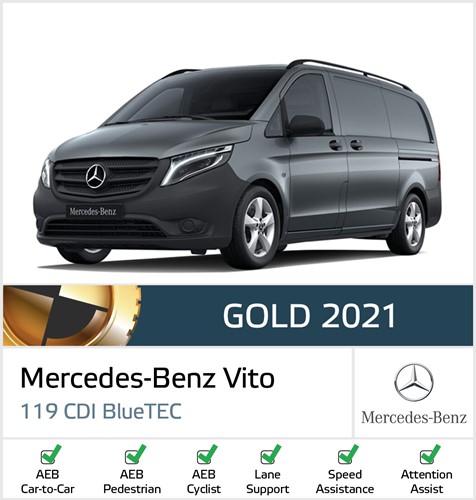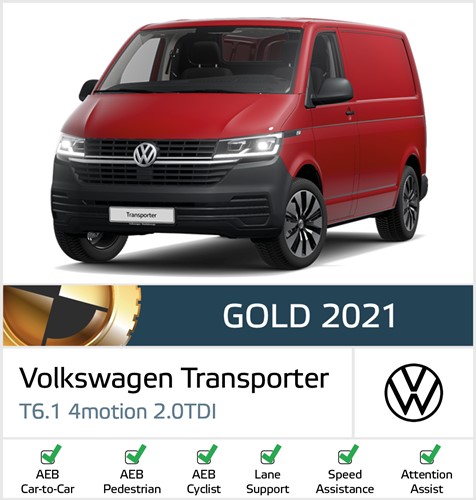Euro NCAP Offers Yardstick for Commercial Van Safety
16th December 2020
 Fourteen commercial vans qualify for an award by Euro NCAP under new criteria that prioritize crash avoidance and driver assistance systems. Nineteen vans, covering 98 percent of European sales last year, were tested in accordance with Euro NCAP 2018 Safety Assist protocols, that include AEB, Lane Support, Speed Assistance and Occupant State Monitoring.
Fourteen commercial vans qualify for an award by Euro NCAP under new criteria that prioritize crash avoidance and driver assistance systems. Nineteen vans, covering 98 percent of European sales last year, were tested in accordance with Euro NCAP 2018 Safety Assist protocols, that include AEB, Lane Support, Speed Assistance and Occupant State Monitoring.
The new ratings encourage wider fitment of ADAS on commercial vans, show differences between brands in the systems’ performance and will help fleet operator and business owners to make safer choices. For the benefit of commercial van drivers and all road users, Euro NCAP calls for:
- Standardisation of safety equipment on commercial vans ahead of the General Safety Regulation which is still some years away
- Better performance of advanced driver assistance systems (ADAS) on commercial vans, to match the state-of-the-art technology fitted to cars
- Fleet operators to take responsibility for the safety of their drivers and to demand a minimum silver-level performance in Euro NCAP’s new ranking scheme when making purchasing decisions
- Greater clarity from van manufacturers, on websites and in marketing material, regarding the safety features available on their vehicles.
The use of commercial vans has never been greater or more obvious. The worldwide pandemic and the burgeoning stay-at-home economy have resulted in a significant increase in the need for delivery vehicles. The flexibility that is offered by commercial vans makes them a preferred choice for many businesses. But, as Euro NCAP’s Secretary General, Michiel van Ratingen, points out,
The type of commercial vehicles tested by Euro NCAP are designed to transport goods or equipment and weigh no more than 3.5 metric tons (N1 category). They are known also known as Light Commercial Vehicles (LCVs) and a rating system has been developed to provide a simple way to compare the performance of the safety systems available on them. The driver-assistance systems tested were autonomous emergency braking (AEB), with separate tests for the system’s response to other vehicles, pedestrians and cyclists; lane support, which helps to prevent the vehicle drifting out of lane; speed assistance, which helps the driver maintain a safe speed, appropriate for the road the vehicle is on; and occupant state monitoring, which can detect whether or not the van’s occupants are wearing their seatbelts and are in a fit state to drive. An overall score was given to the tested vehicles, from which their ranking was established.
In this round of tests, top achievers, the Ford Transit, Mercedes-Benz Vito and VW Transporter, are awarded Gold. The Ford Transit Custom, Mercedes-Benz Sprinter, Opel/Vauxhall Vivaro, Peugeot Expert and the VW Crafter are awarded Silver. Six more vans are given the Bronze award: the Citroën Jumper and the Jumpy, FIAT Ducato, Iveco Daily, Peugeot Boxer and the Toyota PROACE. At the bottom of the list are the FIAT Talento, Opel/Vauxhall Movano, Nissan NV400, the Renault Master and Renault Trafic. The latter vans are not recommended for their general lack of safety systems.
Regarding fitment of safety technologies, there are regional differences: systems that are standard in one country may be optional in others. And vehicles which are identical except for the badge on the front, also differ in the safety they offer: AEB is an option on the Renault Master but is not available on the Nissan NV-400, which comes off the same production line.
Michiel van Ratingen, says,
For more info go to Euro NCAP’s 2021 Commercial Van Safety campaign page.
For a full set of results download our overview of 2021 results.
Editor’s note
For media information, please contact media@euroncap.com.
Follow us online and on social media:
Twitter: @euroncap
Facebook: forsafercars
Instagram: @euroncap_forsafercars
YouTube: EuroncapCom
About Euro NCAP
Euro NCAP organizes crash tests on new vehicles and provides motoring consumers with a realistic and independent assessment of the safety performance of some of the most popular cars sold in Europe. Established in 1997 and backed by several European Governments, motoring, consumer and insurance organizations, Euro NCAP has rapidly become a catalyst for encouraging significant safety improvements to new car design. Visit our website: www.euroncap.com
Euro NCAP ratings strictly apply to vehicles of the specifications offered in Europe. The ratings do not necessarily apply to models offered in other regions, even when sold under an identical name, as production specification and equipment may vary.


